A visit to “Eat London” — a festival of food and creativity in Trafalgar Square, and an introduction to food and cooking processes in contemporary design. Published in Modern Weekly Lifestyle June 2007.
Table manners play an important part in British life – reinforcing social etiquette and the class structure. Kids are used to being reprimanded for playing with their food, particularly at formal mealtimes; occasions governed by strict rules and tools. This is a gift for advertisers who know how much kids hate being told what to do. Until the recent ban on the advertising of junk food to kids in the UK, after-school and Saturday morning TV was crammed with commercials showing kids doing everything they shouldn’t with strangely-shaped and brightly-coloured processed food. There is something not only subversive, but inherently fun about playing with food that played a big part in the success of the recent “Eat London” event. The concept, dreamt up by Spanish artists and architects Alicia and Barbara Ortiz, first took place in Melbourne, Australia. This latest version, masterminded by the London International Festival of Theatre, involved local schools and community groups creating a giant, edible model of the city, assembled into a 60 square metre map right in the heart of the capital. I went along to Trafalgar Square to see the culmination of months of work by the 200+ people involved, and hopefully to taste a piece of the city.
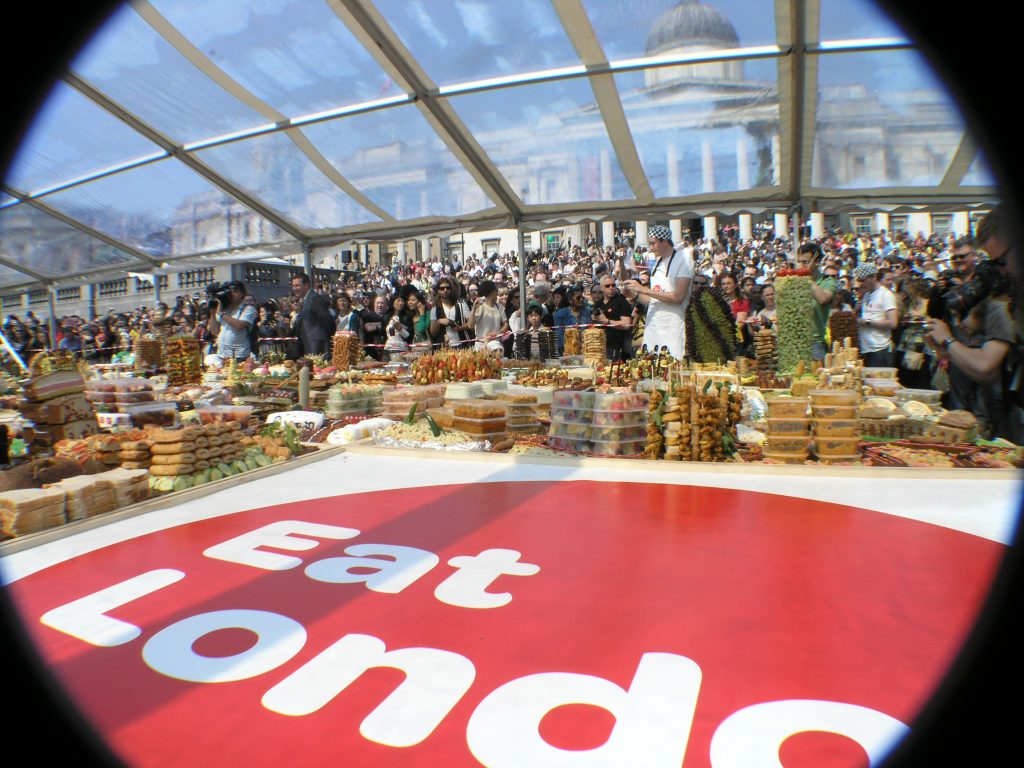
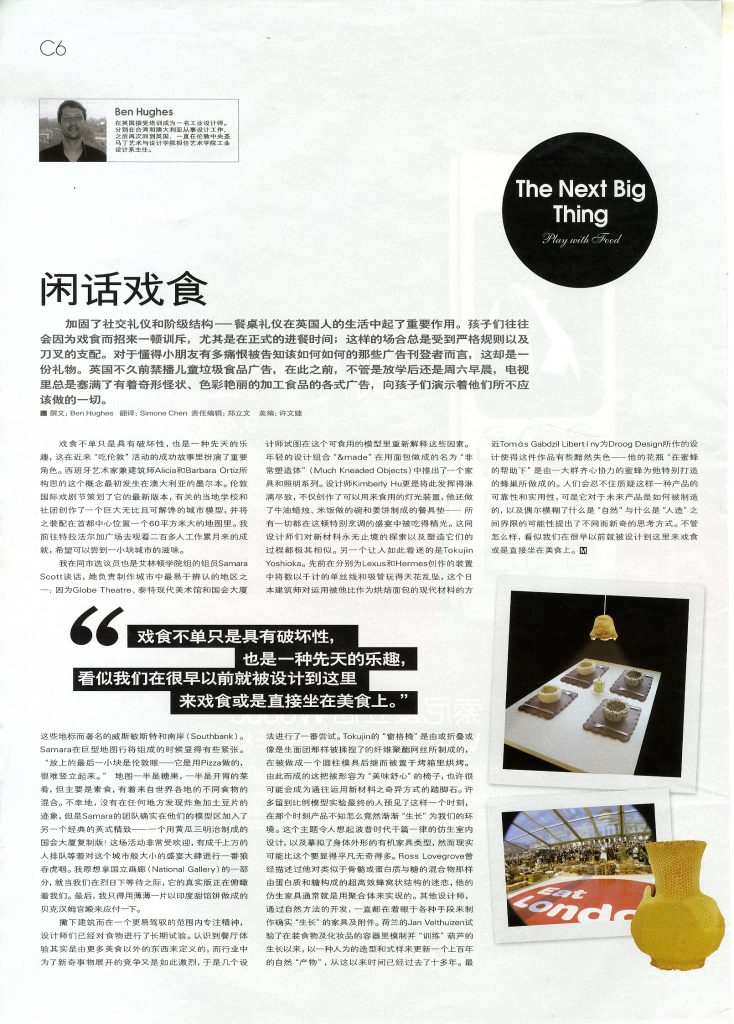
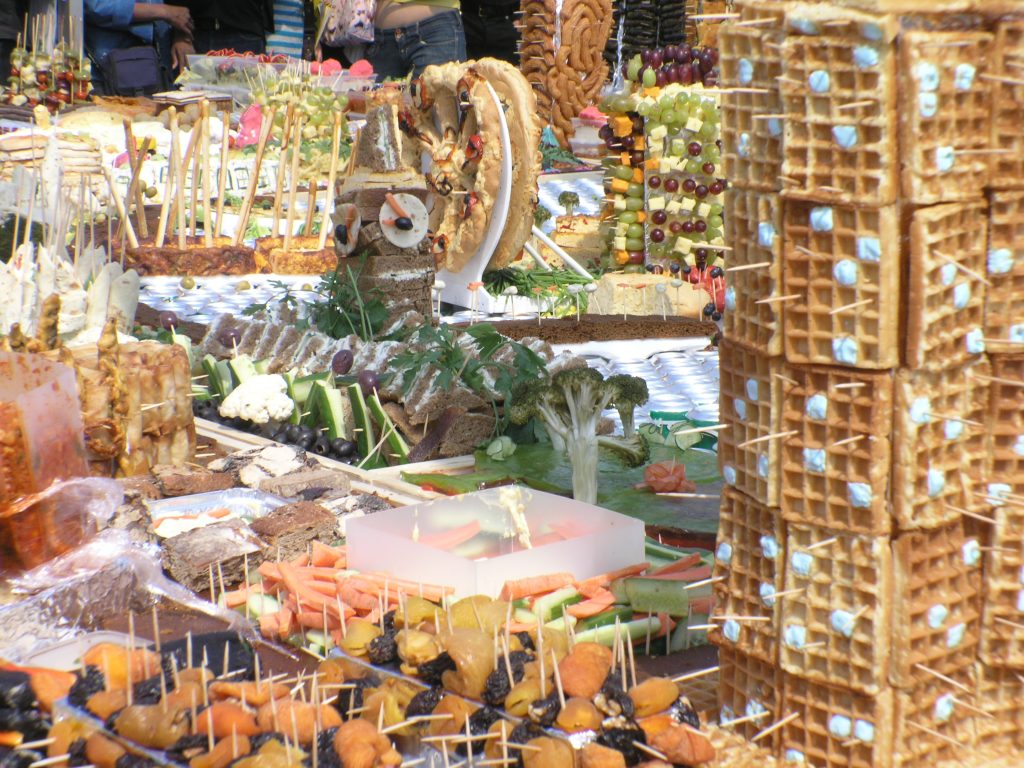
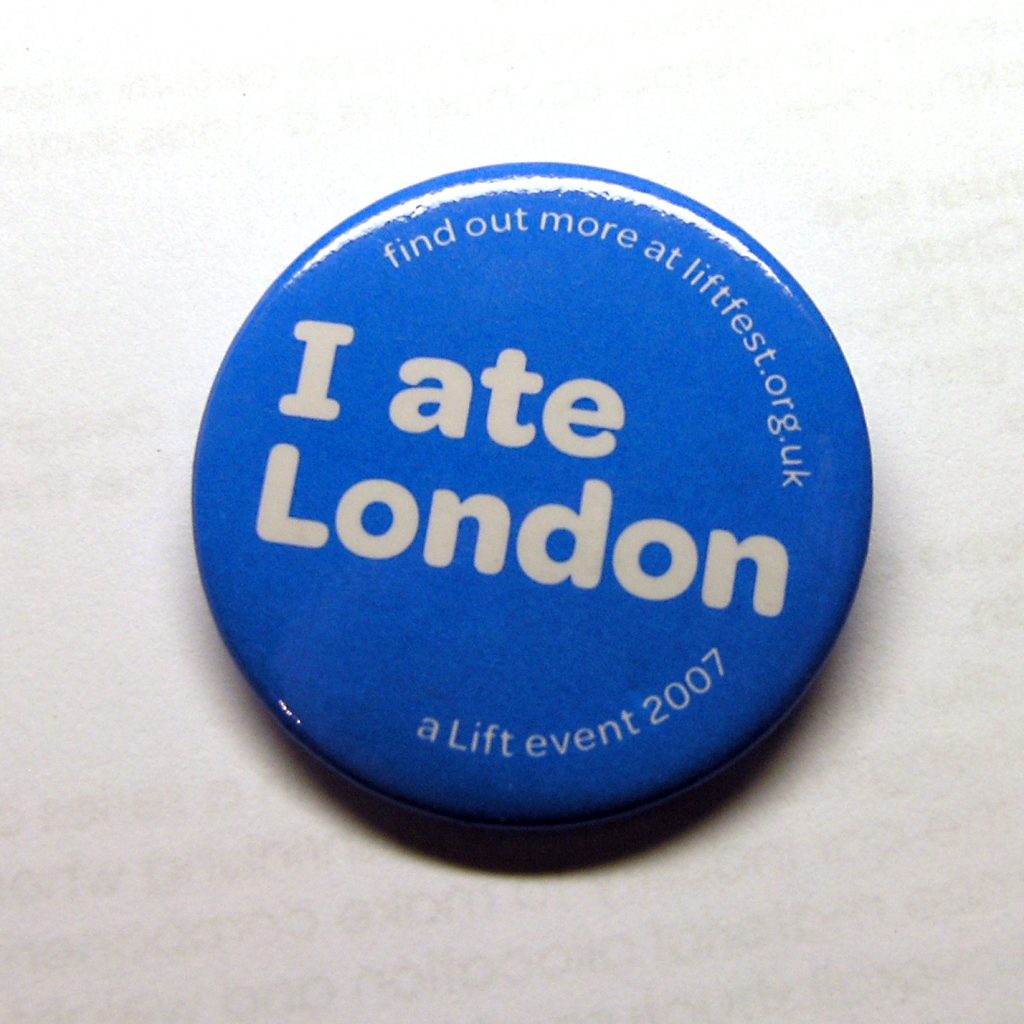
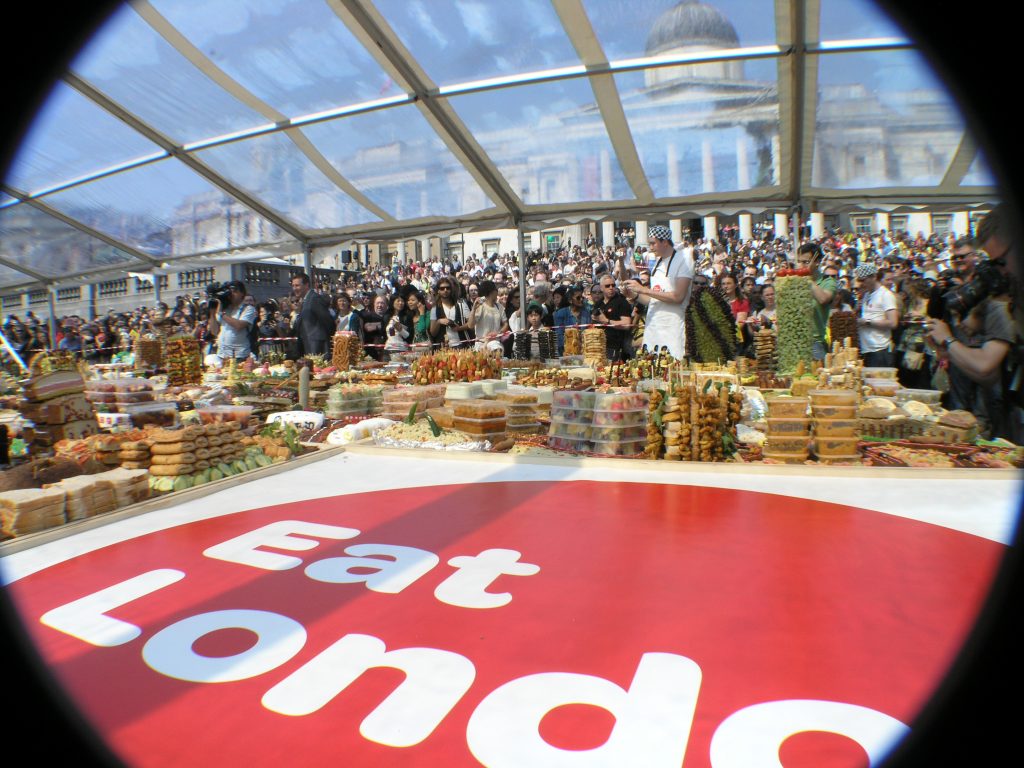
I spoke to Samara Scott, a member of the City and Islington College group responsible for modelling one of the most recognisable areas of the city: Westminster and Southbank; famous for landmarks such as the Globe Theatre, Tate Modern and Houses of Parliament. Samara was nervous as the giant map came to be assembled. “The last bit to be put on is the London Eye — it’s made out of a Pizza and is difficult to stand up.” The map was half-sweet and half savoury, but mainly vegetarian, with a diverse mix of foods from around the world represented. Unfortunately there was no evidence of Fish and Chips anywhere, but Samara’s group did manage to incorporate another classic English delicacy in their section of the model – a facsimile of the Houses of Parliament made out of cucumber sandwiches! The event was hugely popular, with thousands queuing to devour the city-sized feast. I wanted to have part of the National Gallery, the real version of which was overlooking us as we waited in the sun. In the end, I had to make do with a slice of Buckingham Palace, sculpted out of sweet Indian pastries.
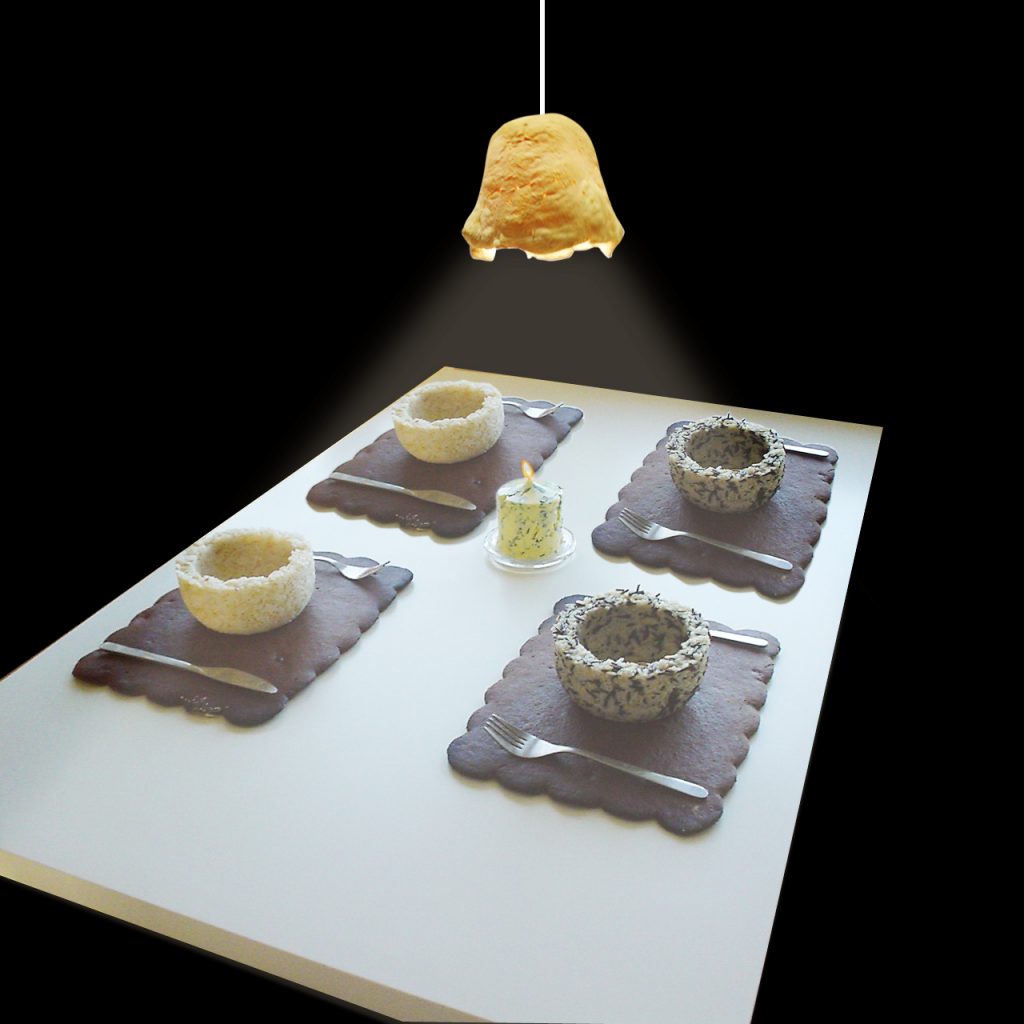
Leaving the architectural behind, and concentrating on a more manageable scale, food is an area that designers have long experimented with. Recognising that the restaurant experience is defined by so much more than the food, and with competition so strong for novelty in this area, several designers have attempted to re-interpret some of these elements in edible form. The young design collective “&made” are promoting a furniture and lighting series under the title ‘Much Kneaded Objects’ made out of bread. Taking this one step further, designer Kimberly Hu has created not only edible light fittings, but also butter candles, rice bowls and gingerbread placemats – all to be eaten during the course of a specially cooked meal. This has a great deal in common with the never-ending search for new materials for designers, and the processes that form them.
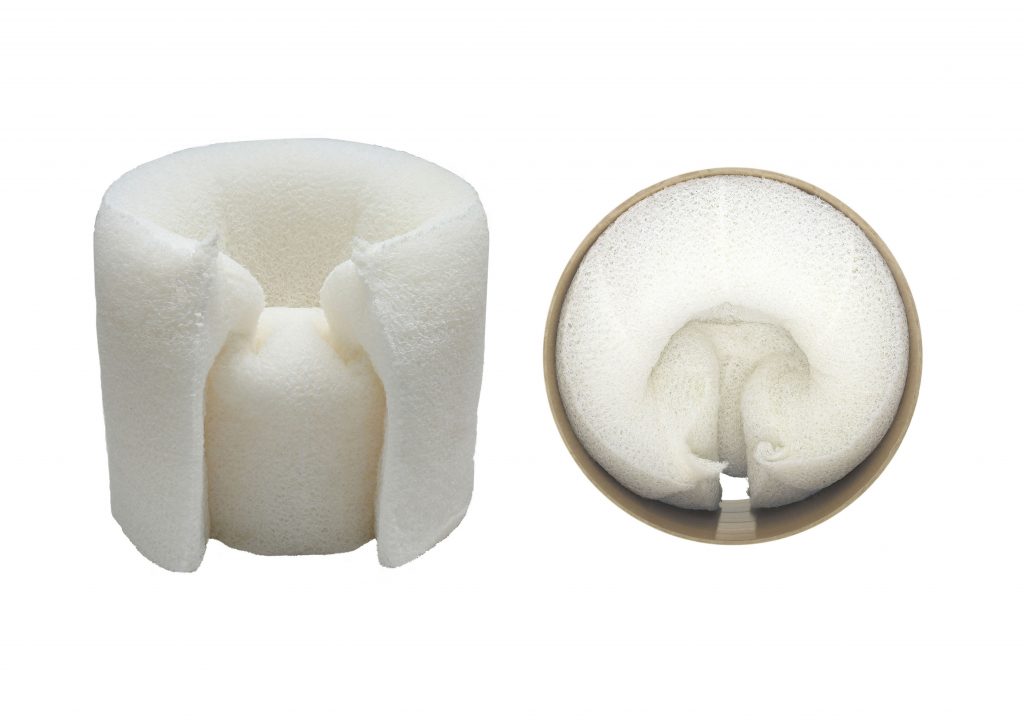
One such obsessive is Tokujin Yoshioka. The Japanese architect who has had so much fun with thousands of monofilament strands and drinking straws in installations for Lexus and Hermes respectively has experimented with a process for working with modern materials that he likens to baking bread. Tokujin’s “Pane” chair is made from a fibrous polyester mesh which is folded, or ‘kneaded’ like dough, into a cylindrical mould and then baked in an oven. The resulting chair, described as ‘deliciously comfortable’ may well be the stepping-stone to even more outlandish ways of working with new materials. Many of those at the experimental end of the scale envision a time when products will somehow ‘grow’ into our surroundings. This theme brings to mind the groovy biomorphic interiors of the pop era, and the type of organic furniture that mimics body shapes, but the reality might be more prosaic than this. Ross Lovegrove, whose biomorphic furniture is generally realised in polymers, has described his fascination with super-efficient cellular structures made from proteins and sugars like bones, or meringues.
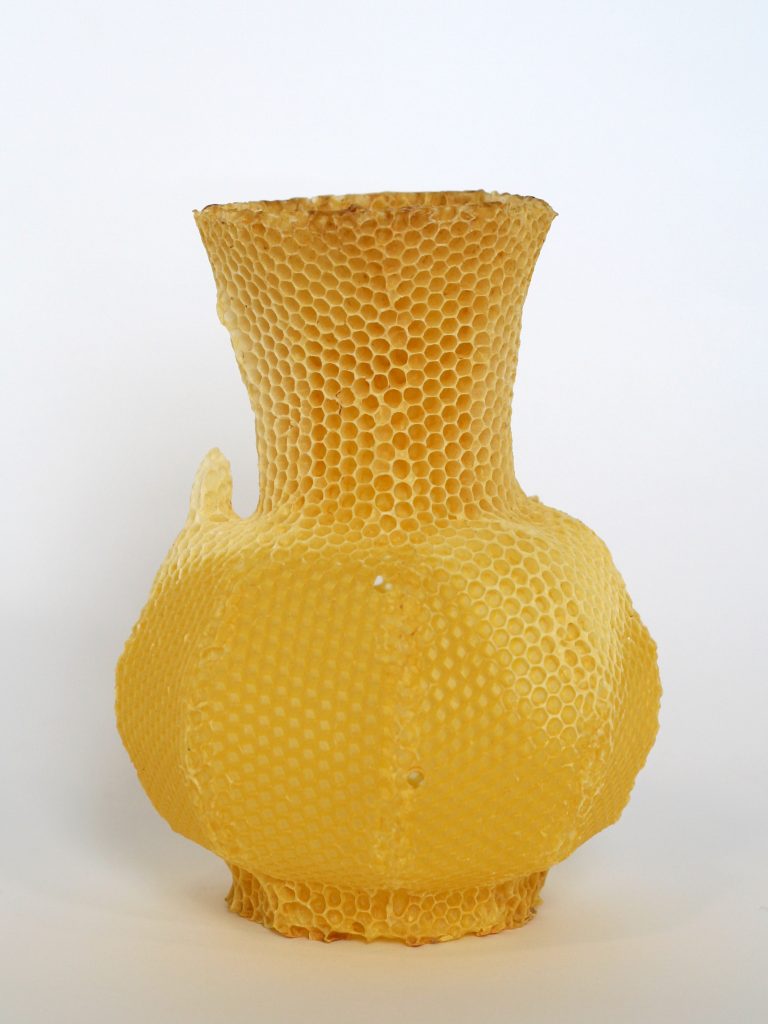
Other designers have already been looking at ways of literally ‘growing’ furniture and accessories through the harnessing of natural processes. It is more than 10 years since Jan Velthuizen from the Netherlands experimented with moulding and ‘training’ the growth of gourds into containers for food and toiletries, bringing a centuries old natural ‘product’ up to date with a man-made form and styling. This work has been eclipsed recently by that of Tomás Gabdzil Libertíny for Droog Design – his vase “With a Little Help of the Bees” is made from honeycomb which is ‘manufactured’ for him by a swarm of cooperative bees. One can’t help but question the solidity, or practicality of such a product, but it offers a different, novel way of thinking about how things might be produced in the future, and also how it is sometimes possible to blur the boundaries between what is ‘natural,’ and what is ‘man-made.’ Either way, it looks as though we are set to be playing with, or sitting on, food for a long time to come.
Images:
Eat London
Photo – Ben Hughes
“I Ate London” Badge
Photo – Ben Hughes
Eat London – Pizza “London Eye” and Cucumber Sandwich “Houses of Parliament.”
Photo – Ben Hughes
“With a Little Help of the Bees” by Tomás Gabzdil Libertíny for Droog.
Photo – Tomás Gabzdil Libertíny
Bread Chair by Tokujin Yoshioka
Edible Table Setting by Kimberly Hu
Photo – Kimberly Hu
